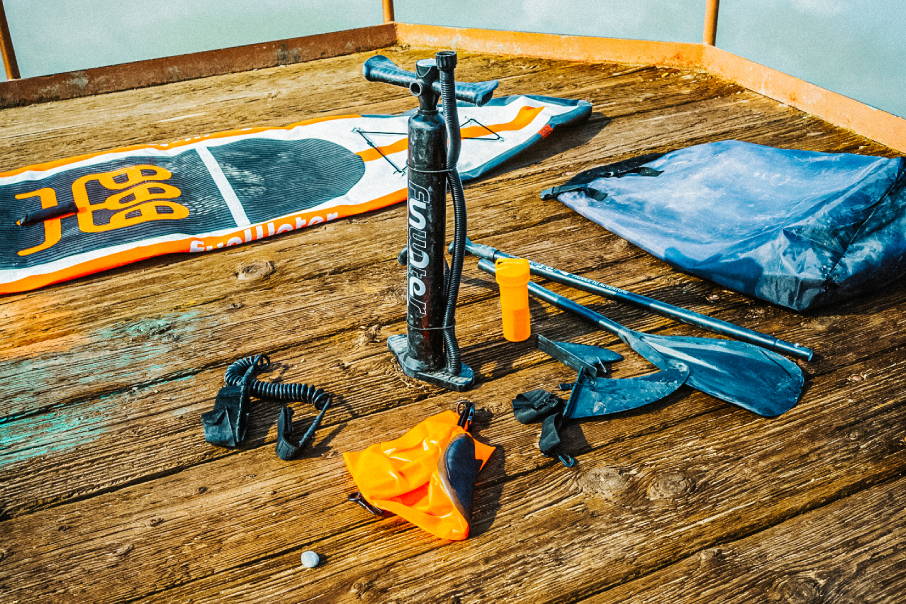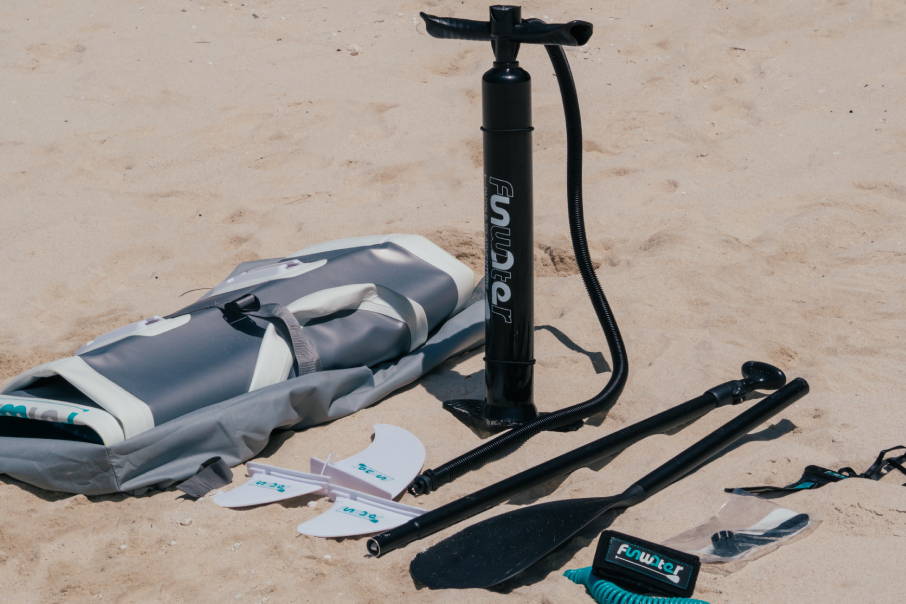Always rinse your SUP with fresh water after each use, especially if paddling in salt water or lakes. A gentle soap helps remove dirt and prevents mould.


How to Store Your Inflatable Paddle Board: A Complete Guide for Canadians
One of the best things about an inflatable stand up paddle board (iSUP) is how easy it is to pack up and store. Unlike hard boards, you don’t need a big garage or roof racks. Still, the way you clean, deflate, fold, and store your SUP board can make a big difference in how long it lasts. Here’s a straightforward guide for Canadians on keeping your inflatable paddle board in great shape for years.
After every paddle, give your paddle board a quick rinse with fresh water. This is especially important if you’ve been paddling in salt water or muddy rivers. Salt, sand, and dirt can wear down the material over time.
Make sure your SUP board is completely dry before packing it away. Storing a damp board can lead to mould and bad smells.

When you’re ready to pack up, release the air slowly through the valve. Don’t jump or press down hard on the SUP to push the air out—this can put stress on the seams.

Start folding your inflatable paddle board from the tail (near the valve) so the remaining air is pushed out as you go. Fold just enough to fit in the bag—it doesn’t need to be as tight as possible.
Try not to always fold along the exact same lines. Changing it up a little helps prevent deep creases in the material.
Your paddle board bag is designed to keep the stand up paddle board compact and easy to move. Pack your paddle, fins, and pump separately so they don’t rub against the blow up paddle board and cause damage.

Avoid direct sunlight: UV rays can weaken the PVC material.
Keep it cool and dry: Don’t leave your SUP in a hot car, damp basement, or near a heater.
Winter storage: For Canadians, winter is long and cold. Store your board indoors at room temperature if possible, like in a basement or closet. Extreme cold can make the material stiff and brittle.
If you’re putting your SUP away for the off-season, you have two options:
Folded in the bag (most space-saving, works fine for a few months).
Half-inflated and lying flat (best for avoiding deep creases, if you’ve got space in a basement or garage).
Taking just a few minutes to rinse, dry, and store your paddle board the right way makes a big difference. Whether you’re wrapping up after a summer at the cottage or putting gear away for the Canadian winter, proper storage will keep your inflatable SUP ready for next season’s adventures.
Subscribe
Sign up to our newsletter to receive news, reviews, discounts and deals...
Funwater Blogs
Frequently Asked Questions
How should I clean my inflatable paddle board before storing it?
Always rinse your SUP with fresh water after each use, especially if paddling in salt water or lakes. A gentle soap helps remove dirt and prevents mould.
Can I store my inflatable paddle board outside in Canada?
It’s best to avoid direct sunlight, freezing temperatures, or damp garages. Store it indoors in a cool, dry place for longer lifespan.
Should I keep my inflatable paddle board fully inflated during storage?
Not necessarily. You can deflate it and roll it loosely, or keep it partially inflated if you have space. Just avoid sharp objects.
What’s the best way to fold an inflatable SUP board?
Start at the tail and roll toward the nose to push out any remaining air. Don’t fold too tightly to protect seams.
How often should I check my SUP board in storage?
Every few weeks, check for moisture, mould, or air leaks. A quick inspection helps keep your board ready for your next paddle.